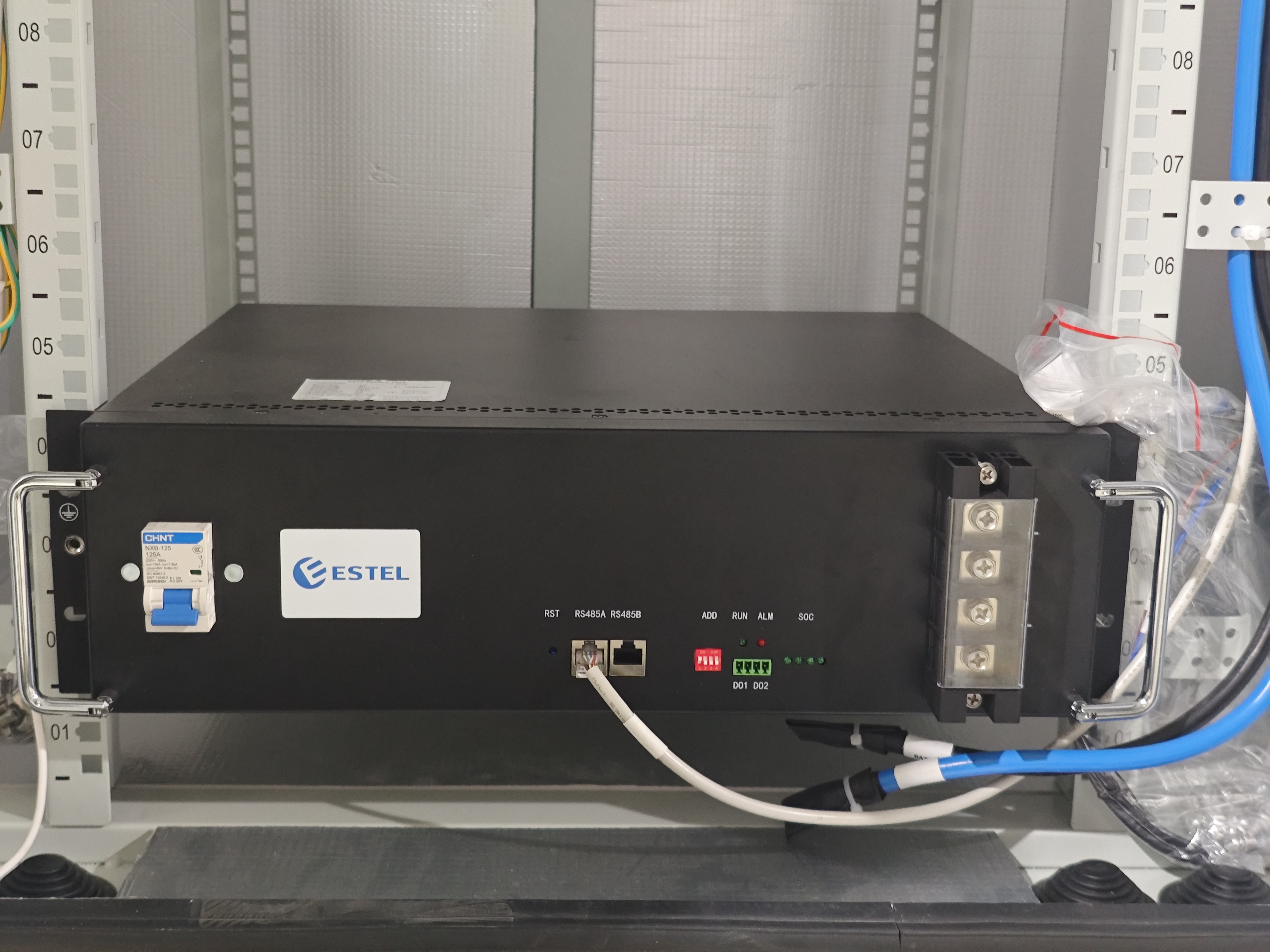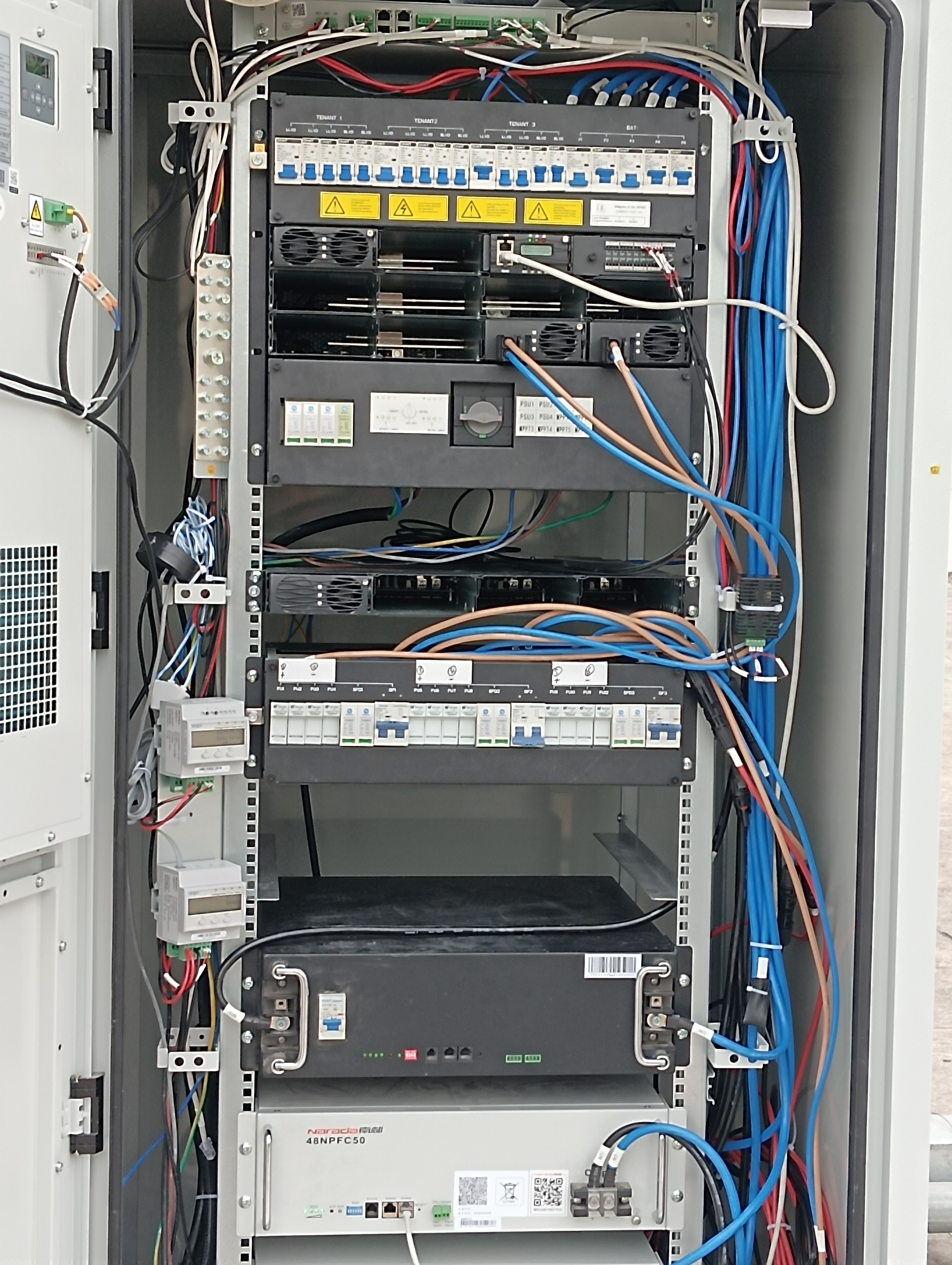Maximize the Lifespan of Your ESTEL Telecom Battery Backup in 2025

In today’s connected world, uninterrupted communication is critical. Telecom battery backup systems keep your network running during power disruptions, ensuring consistent service delivery. However, neglecting maintenance can shorten their life and lead to costly replacements. Proper upkeep not only prevents downtime but also enhances operational reliability.
ESTEL systems stand out with their efficiency ratings above 95%, superior durability in extreme conditions, and smart grid integration. These features reduce energy losses and improve backup power management. With tool-less access and self-diagnostic capabilities, ESTEL makes maintenance easier while protecting your telecom equipment from wear and tear.
Key Takeaways
Keep your UPS batteries in good storage. Store them at 59°F and 50% humidity to avoid losing power.
Check and care for your batteries often. Inspect them every month and service them yearly to keep them working well.
Watch battery health carefully. Use tools to check heat, voltage, and charge cycles to find problems early.
Change batteries every 3-5 years or when power drops below 80%. Replacing them on time stops sudden failures and keeps power steady.
Don’t overload or overcharge your UPS systems. Measure power needs and check charging to save battery life and performance.
Understanding Your ESTEL Telecom Battery Backup

Components of Telecom Battery Backup Systems
Telecom battery backup systems consist of several critical components that ensure reliable operation during power outages. The battery chemistry plays a vital role, with lithium-ion batteries being the preferred choice due to their high energy density and long cycle life. Thermal management systems regulate temperature, preventing overheating and ensuring safe operation. A battery management system (BMS) monitors essential parameters like voltage and temperature, protecting the system from overcharging or deep discharging. Regular maintenance protocols further enhance the longevity of these systems.
Temperature is another key factor influencing performance. Batteries operate efficiently within optimal temperature ranges, facilitating smooth chemical reactions. Deviations from these ranges can compromise efficiency and reduce lifespan. By understanding these components, you can better manage your telecom battery backup systems and ensure their reliability.
Functionality of ESTEL Battery Backup Systems
ESTEL battery backup systems are designed to deliver high-quality performance under demanding conditions. Their functionality revolves around several benchmarks:
Performance Aspect | Description |
|---|---|
Continuous Power Supply | Keeps telecom equipment operational during outages. |
Seamless Transition | Ensures smooth switching between primary and backup power sources to prevent data loss. |
Voltage Consistency | Maintains stable voltage for uninterrupted communication network operations. |
Extended Runtime | Utilizes advanced battery technologies for prolonged operation during power failures. |
Environmental Resilience | Withstands harsh conditions, ensuring dependable performance in emergencies. |
These systems integrate smart technologies to optimize backup power management, making them a reliable choice for telecom applications. Their ability to deliver consistent voltage and extended runtime ensures uninterrupted service, even during prolonged outages.
Common Challenges in UPS Battery Maintenance
Maintaining uninterruptible power systems (UPS) can be challenging without proper knowledge and tools. Common issues include batteries failing to meet their expected lifespan due to poor management and lack of regular maintenance. Many users struggle with monitoring charge and discharge cycles, leaving battery performance metrics like voltage balance and capacity unknown.
Temperature effects are often overlooked, yet they significantly impact battery efficiency. Without temperature compensation, batteries may experience reduced performance or even damage. Additionally, inadequate detection methods can lead to undiagnosed issues, compromising the reliability of the UPS. Addressing these challenges requires proactive monitoring, timely maintenance, and a thorough understanding of battery operation.
Key Tips to Maximize Battery Lifespan

Optimal Storage Conditions for Battery Backup
Proper storage conditions significantly impact the life of UPS battery systems. When storing your telecom battery backup systems, maintaining the right temperature and humidity levels is crucial. Batteries stored at high temperatures can lose up to 35% of their capacity at 40°C (104°F), while excessive humidity accelerates self-discharge.
The following table outlines the recommended storage conditions to preserve battery quality and performance:
Aspect | Recommendation |
|---|---|
Recommended Storage Temp | Approximately 15°C (59°F) |
Optimal Relative Humidity | Around 50% |
Temperature Range | 10°C to 20°C |
Humidity Range | 40% to 60% |
Effects of High Temp | Up to 35% capacity loss at 40°C |
Effects of High Humidity | Increased self-discharge |
To maximize battery runtime and longevity, store your batteries in a cool, dry environment. Avoid exposing them to direct sunlight or placing them near heat sources. These simple steps can help you maintain the life of UPS battery systems and ensure reliable backup power when needed.
Regular Maintenance Practices for UPS Systems
Regular maintenance is essential for keeping your uninterruptible power supply in top condition. By following a structured approach, you can prevent unexpected failures and increase UPS battery backup time. Here are some best practices:
Document Meticulously: Keep detailed records of battery specifications, installation dates, and maintenance history. This helps you track performance trends and identify potential issues early.
Establish a Maintenance Routine: Schedule regular maintenance checks, including monthly inspections and annual servicing. Consistent checks ensure that your UPS operates efficiently.
Understand the Battery Chemistry of Your UPS: Different battery types, such as lithium-ion or lead-acid, have unique maintenance requirements. Familiarize yourself with these to optimize performance.
Replace Your Batteries Regularly: Batteries typically last three to five years. Replacing them on time prevents sudden failures and extends the life of UPS battery systems.
Preventive maintenance not only enhances battery runtime but also ensures the quality of your telecom battery backup systems. By staying proactive, you can avoid costly downtime and maintain uninterrupted power for your operations.
Avoiding Overloads and Overcharging
Overloading and overcharging are two common issues that can shorten the life of UPS battery systems. Overloading occurs when the connected devices draw more power than the UPS can handle, leading to overheating and reduced battery runtime. To prevent this, calculate the total power requirements of your equipment and ensure they stay within the UPS's capacity.
Overcharging, on the other hand, damages the battery by causing excessive heat and chemical degradation. Modern UPS systems, like those from ESTEL, come equipped with battery management systems (BMS) that regulate charging cycles. However, you should still monitor the charging process and avoid leaving the UPS plugged in unnecessarily.
By managing power loads effectively and using smart charging practices, you can protect your battery backup from premature wear and tear. These measures not only increase UPS battery backup time but also ensure consistent performance during power outages.
Monitoring Battery Health Effectively
Monitoring the health of your UPS batteries is essential for ensuring consistent performance and avoiding unexpected failures. By keeping track of key parameters like temperature, voltage, and charge cycles, you can identify potential issues before they escalate. Modern telecom battery backup systems, including those from ESTEL, often come equipped with advanced monitoring tools. These tools provide real-time data, enabling you to make informed decisions about maintenance and replacements.
Temperature monitoring plays a critical role in maintaining battery health. Batteries operate best within specific temperature ranges, and deviations can lead to reduced runtime or permanent damage. The following table highlights how temperature impacts monitoring accuracy and early detection of battery issues:
Model Performance | Observations | |
|---|---|---|
25 | High accuracy | Identified abnormal changes in batteries 04, 07, and 08 |
35 | Excellent early detection | Maintained accuracy in extreme environments |
45 | Excellent early detection | Maintained accuracy in extreme environments |
To maximize the life of UPS battery systems, you should regularly check for abnormal temperature fluctuations. Pair this with routine inspections of voltage levels and charge/discharge cycles. These practices help you maintain the quality of your battery backup and ensure reliable power during outages.
Tip: Use battery management systems (BMS) to automate monitoring tasks. These systems can alert you to irregularities, saving you time and effort while protecting your equipment.
Timely Battery Replacement for Longevity
Replacing old batteries at the right time is crucial for preserving the life of UPS battery systems and preventing costly downtime. Over time, batteries lose capacity due to chemical wear and tear. Lead-acid batteries, commonly used in UPS systems, typically experience significant capacity loss after three years. Between three to five years, they enter a critical deterioration phase. When a battery's capacity drops to 80%, it is considered at the end of its life. According to IEEE standards, you should replace old batteries at this point to avoid performance degradation and potential system failures.
Scheduled replacements not only extend battery runtime but also reduce the risk of unexpected failures. Here are some best practices for planning replacements:
Regular Battery Testing and Storage: Conduct periodic tests to assess battery capacity and identify weaknesses. Store batteries in optimal conditions to prevent premature wear.
Monitor Battery Capacity and Cycling: Keep track of discharge and recharge cycles to predict when a battery will reach the end of its life.
Evaluate the Infrastructure’s Environment: Ensure the environment is clean and free of contaminants like dust, which can accelerate battery degradation.
Keep Detailed Records of Maintenance: Document all maintenance activities, including test results and replacement dates. This helps you plan replacements proactively.
By following these steps, you can increase UPS battery backup time and maintain the reliability of your telecom battery backup systems. Timely replacements not only protect your equipment but also ensure uninterrupted power during critical operations.
Note: Always use high-quality replacement batteries that match the specifications of your UPS system. This ensures compatibility and optimal performance.
Troubleshooting Common Issues
Addressing Swelling or Leaking Batteries
Swelling or leaking batteries are clear signs of a failing UPS battery. These issues often result from overcharging, overheating, or internal chemical reactions gone wrong. Addressing them promptly ensures the safety and reliability of your telecom battery backup system.
Start by conducting a visual inspection of each battery cell or module. Look for physical damage, swelling, or leakage. Replace any faulty units immediately to prevent further damage to the system. If you notice persistent issues, professional diagnostics can provide a comprehensive assessment of battery health.
Here’s a quick guide to troubleshooting swelling or leaking batteries:
Technique | Description |
|---|---|
Cell Inspection | Conduct a visual inspection of each cell/module for signs of damage, swelling, or leakage. Replace any faulty units immediately. |
Professional Testing | If issues persist, consider professional diagnostics to assess battery health comprehensively. |
Additionally, inspect the charger and cables for any visible damage. Clean the battery connections and ensure they are secure. Verify the settings of the battery management system (BMS) and update its firmware if necessary. These steps can help you maintain the quality and safety of your UPS system.
Tip: Always handle swollen or leaking batteries with care. Dispose of them according to local regulations to avoid environmental harm.
Resolving Reduced Runtime or Capacity Problems
Reduced runtime or capacity issues often indicate that your UPS batteries are nearing the end of their lifespan. This problem can disrupt the power supply during outages, compromising the reliability of your telecom systems. Identifying and addressing the root cause can restore optimal performance.
Begin by testing the battery capacity. Use a load tester to measure how long the battery can sustain power under a specific load. If the runtime falls significantly below the expected level, it may be time for a replacement. Monitor the discharge and recharge cycles to ensure the battery is functioning within its designed parameters.
Environmental factors also play a role in reduced runtime. High temperatures accelerate battery degradation, while low temperatures can reduce efficiency. Maintain the operating environment within the recommended range to extend the life of UPS battery systems.
Note: If your UPS system consistently fails to deliver adequate runtime, consider upgrading to a higher-capacity battery or a more advanced model like ESTEL systems.
Fixing Communication Errors in Telecom Battery Backup Systems
Communication errors between the UPS and connected devices can disrupt the seamless operation of your telecom network. These errors often stem from outdated firmware, faulty cables, or misconfigured settings.
To resolve these issues, start by checking all physical connections. Ensure that cables are securely attached and free from damage. Replace any worn-out cables to restore proper communication. Next, verify the firmware version of your UPS and update it if necessary. Modern systems like ESTEL often include self-diagnostic tools that can identify and resolve communication errors automatically.
If the problem persists, review the configuration settings of your UPS and connected devices. Incorrect settings can lead to miscommunication, affecting the overall performance of your telecom battery backup system. Adjust the settings as needed to ensure compatibility.
Tip: Regularly update your UPS firmware and perform routine maintenance to prevent communication errors. These practices enhance system reliability and ensure uninterrupted power supply.
When to Seek Professional Assistance for UPS Maintenance
Knowing when to call a professional for UPS maintenance can save you from unexpected failures and costly repairs. While regular upkeep can address many issues, some situations require expert intervention to ensure your system operates at peak performance.
Signs That Indicate You Need Professional Help
Certain warning signs suggest it’s time to involve a trained technician. These include:
Frequent Alarms or Alerts: If your UPS system frequently triggers alarms, it may indicate underlying issues that need expert diagnosis.
Unusual Battery Behavior: Swelling, leaking, or rapid capacity loss often signals deeper problems that require professional attention.
Inconsistent Power Output: Fluctuations in voltage or reduced runtime during outages suggest potential faults in the system.
Repeated Communication Errors: Persistent errors between your UPS and connected devices may point to configuration or hardware issues.
Ignoring these signs can lead to critical failures, compromising your telecom network's reliability.
Benefits of Professional Maintenance
Professional maintenance offers several advantages that go beyond routine checks. Technicians use advanced tools and techniques to identify and resolve complex issues. Here’s what you can expect:
Thorough Inspections: Experts conduct detailed inspections and load testing to uncover hidden problems. This proactive approach helps you address defects before they escalate.
Scheduled Check-Ups: Regular visits from professionals ensure your UPS system remains in optimal condition. These check-ups prevent costly repairs by spotting potential issues early.
Enhanced System Reliability: Professional maintenance minimizes the risk of unexpected failures, ensuring uninterrupted power supply for your telecom operations.
By relying on trained technicians, you can extend the lifespan of your UPS system and maintain consistent performance.
When to Schedule Professional Maintenance
Timing plays a crucial role in effective UPS maintenance. Consider scheduling professional assistance in the following scenarios:
After Prolonged Use: If your UPS system has been in operation for several years, a professional evaluation can help assess its condition.
Following a Major Outage: Power outages can strain your UPS system. A post-outage inspection ensures all components are functioning correctly.
Before Peak Usage Periods: High-demand periods, such as seasonal spikes in telecom activity, require a fully operational UPS system. A preemptive check-up can prepare your system for increased loads.
Regular professional maintenance complements your routine checks, providing an added layer of security for your telecom battery backup.
Tip: Keep detailed maintenance logs to track your UPS system's performance. These records help technicians identify trends and recommend timely interventions.
Choosing the Right Professional Service
Selecting a reliable service provider is essential for effective UPS maintenance. Look for technicians with experience in telecom battery backup systems. Verify their certifications and ask about the tools and techniques they use. A reputable provider will offer tailored solutions that meet your system's specific needs.
Investing in professional maintenance ensures your UPS system delivers consistent power, protecting your telecom network from disruptions. By addressing issues early, you can avoid downtime and extend the life of your equipment.
Proactive maintenance is the cornerstone of extending the lifespan of your UPS battery system. By addressing issues before they escalate, you reduce downtime and avoid costly replacements. A recent comparison of maintenance approaches highlights the advantages of proactive strategies:
Maintenance Approach | Description | Benefits |
|---|---|---|
Reactive | Corrective action after an outage occurs. | High risk of downtime. |
Time-based | Regular preventive maintenance visits. | Complies with regulations but still risky. |
Proactive | Comprehensive maintenance program with assessments and replacement plans. | Cost-effective, ensures reliability, prevents downtime. |
Implementing proactive practices, such as monitoring battery health, avoiding overcharging, and scheduling timely replacements, ensures your system performs reliably. Take action today to safeguard your telecom operations and maximize battery performance in 2025.
FAQ
What is the ideal temperature range for storing UPS batteries?
Batteries perform best between 10°C and 20°C. Temperatures above 40°C can reduce capacity by up to 35%. Always store them in a cool, dry place to prevent damage.
Tip: Use a thermometer to monitor storage conditions regularly.
How often should you replace UPS batteries?
Replace batteries every 3-5 years or when capacity drops below 80%. Regular testing helps you identify when replacements are necessary.
Note: Follow IEEE standards for battery replacement to ensure system reliability.
Can overcharging damage your UPS battery?
Yes, overcharging generates excessive heat, degrading the battery’s chemical structure. Use a battery management system (BMS) to regulate charging cycles and prevent overcharging.
How do you identify a failing UPS battery?
Look for signs like swelling, leakage, or reduced runtime. Frequent alarms or inconsistent power output also indicate potential issues.
Alert: Replace damaged batteries immediately to avoid system failures.
What tools can help monitor battery health?
Modern UPS systems, like ESTEL, include advanced monitoring tools. These track temperature, voltage, and charge cycles in real time, helping you detect issues early.
Emoji Tip: 🛠️ Use these tools to automate monitoring and save time.
See Also
Telecom Cabinets Powered by ESTEL's Energy Storage Solutions
Understanding Risk Analysis for Telecom Cabinet Batteries by ESTEL
Innovative Energy Storage Systems for Telecom Cabinets by ESTEL
The Advantages of Lithium Batteries in Telecom Cabinet Use
Essential Maintenance Tips for Outdoor ESTEL Telecom Cabinets
CALL US DIRECTLY
86-13752765943
3A-8, SHUIWAN 1979 SQUARE (PHASE II), NO.111, TAIZI ROAD,SHUIWAN COMMUNITY, ZHAOSHANG STREET, NANSHAN DISTRICT, SHENZHEN, GUANGDONG, CHINA


